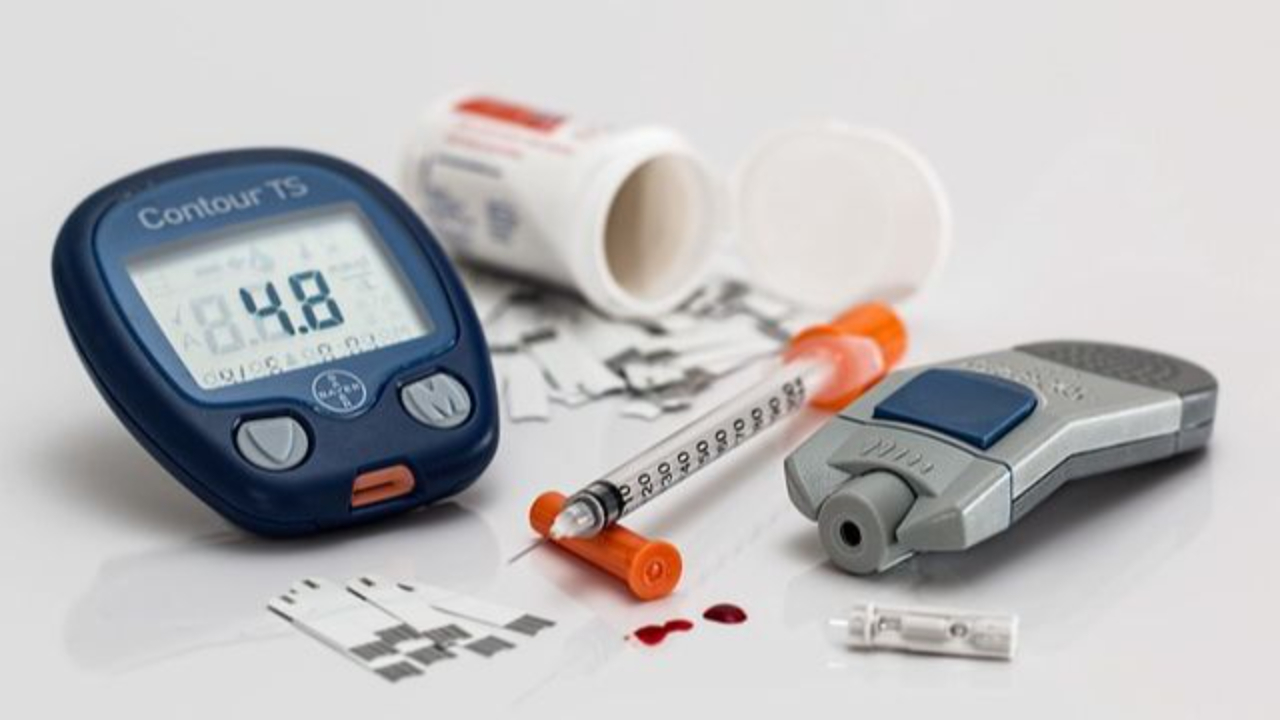KBW | Ozempic Alternatives

Ozempic, a semaglutide medication originally developed for the treatment of Type 2 Diabetes, is all the rage for weight loss these days. While it works incredibly well for both, it may come at a cost. I discuss the popular drug’s pros and cons in a previous blog that you can read here → Ozempic Pros and Cons. And in today’s blog, we’re going to discuss some natural alternatives and their clinical evidence for you to discuss with your medical healthcare provider.
How Do Semaglutides Work?
These medications act on GLP-1 receptors and have several main mechanisms of action. It’s important to understand how they work when discussing alternatives so you can understand how and why these alternatives may work for the goals you want to accomplish.
- Semaglutides stimulate the release of insulin from the pancreas. This can help improve glucose regulation and control, which is helpful both for blood sugar management and for weight loss. Biomarkers clinicians typically follow for blood sugar management are HbA1c, fasting glucose, and fasting insulin. We’ll reference those later when we discuss alternatives because we want to make sure we are using alternatives with a similar mechanism of action.
- Semaglutides lead to a reduction of inflammation in the body. The 2023 Lancet article showed a reduction in CRP, which is a marker of inflammation in the body. This is another marker we’ll reference in discussing alternatives.
- Semaglutides suppress the appetite and slow the rate of food absorption in the stomach. This leads to a lower caloric intake overall because the individual stays fuller longer without feeling hungry. Emerging research shows this is partly due to the impact of the drug on leptin and ghrelin (often dubbed the “hunger hormones”). Leptin increases appetite, and ghrelin decreases it. Again, we’ll look at alternatives that impact leptin, ghrelin, stomach emptying, and satiety.
Probiotics for Blood Sugar Management
There are several natural alternatives to Ozempic’s GLP-1 impacts that assist with lowering blood sugar and treating Type 2 Diabetes. One such option is a probiotic called Pendulum. Pendulum has been clinically proven to increase GLP-1 levels. A growing body of research shows that Type 2 Diabetes patients often lack a specific set of bacterial diversity in their gut and that this lack of diversity contributes to blood glucose levels and insulin levels. One of the key species lacking in this population is called Akkermancia, which is a key component of the probiotic Pendulum (which is why Pendulum is included in the Ozempic Alternative Protocol I designed!). In a 12-week parallel, double-blind, placebo-controlled study, Type 2 Diabetes patients were given Pendulum twice a day or a placebo twice a day. The Pendulum group saw significant improvements in glucose areas under the curve (or AUC) and improvements in HbA1c.

The Role of Protein In Weight Loss and Glucose Regulation
A major mechanism of action for Ozempic and similar semi-glutide medications is a reduction in appetite. One of the simplest ways to modulate your appetite without this medication is to increase your protein intake. Most people do not consume enough protein, which leaves them feeling ravenously hungry, which can lead to overconsumption of calories (and often poor quality calories like choosing cupcakes over carrots). As we’ve discussed previously, Ozempic, originally designed as a medication for Type 2 Diabetes, works by increasing GLP-1 secretion. However, we can increase GLP-1 secretion with protein too! A 2015 study showed dietary intake of protein to be an effective therapy to improve blood sugar levels thanks to protein’s ability to increase GLP-1 secretion (Wang et al.).
In 2006 Lejeune investigated the impact of a high-protein diet on various hormones, including the key to today’s blog - GLP-1. They found that GLP-1 concentrations were significantly higher with the consumption of a high protein diet that consisted of 30% of calories from protein as opposed to the control group that consumed an “adequate protein diet” with 10% of calories from protein. To put this in perspective, for a 40-year-old woman with a height of 5’7’’ and weight of 165 who works out 4-5 days a week, adequate calorie consumption is 2,369 calories per day. 30% of this would be 710 calories from protein which is 177.6 grams of protein per day. That’s A LOT of protein. 100 grams of protein spread out throughout a day is about 2 eggs, two sausages, a turkey burger, a Greek yogurt, and a large chicken breast. So chances are, unless you’re incredibly intentional with your protein intake, you’re likely falling short of a high protein diet with 30% of calories from protein, which was so successful in the study by Lejeune. The researchers concluded that nutritional strategies such as increasing protein and using supplementation of amino acids can be used to enhance postprandial GLP-1 secretion and “may provide an alternative therapeutic approach in obesity and diabetes.”
Whenever possible, it’s best to obtain your protein from real whole food sources like chicken, fish, beef, and eggs, but the occasional supplemental protein shake can be helpful for busy individuals on the go, which is why I included a HIGH-QUALITY protein powder in my Ozempic Alternative Protocol. The protein powder I selected contains 21 grams of protein from a blend of pea and rice protein and amino acids, 5 grams of which are BCAAs, which, when combined with exercise, can support muscle growth and maintenance. It also contains 20+ essential vitamins and minerals—including calcium L-5-methyltetrahydrofolate (L-5-MTHF, body-ready folate), methylcobalamin (vitamin B12)—to support protein synthesis and healthy metabolic function AND 5 grams of fiber, which we’ll discuss the importance of in the next section!
Fiber to Help With Appetite and Glucose Regulation
Another incredibly important compound for blood sugar regulation and healthy weight and metabolism is fiber. Fiber slows the spike of glucose into the bloodstream after meals which leads to less aggressive insulin spikes. Fiber also serves as a prebiotic, which is associated with an increase in plasma gut peptide concentrations like GLP-1, which can contribute to changes in appetite sensation and glucose excursion responses after a meal (Cani et al., 2009).
However, the average American falls woefully short of the daily recommended fiber intake. The average woman consumes just 10 of the 25 grams of recommended fiber per day, while the average man consumes just 15 of the recommended 38 grams per day (Harvard.edu). High-fiber sources of food are avocados, pears, oats, raspberries, artichokes, and beans (Healthline.com).
Fiber, specifically psyllium, was found to significantly modify postprandial GLP-1 levels (Karhunen et al. 2010), which is why I specifically chose Psyllium husk as the supplemental fiber source included in my Ozempic Alternative Protocol. In addition to taking over for a number of Ozempic’s qualities, like slowing stomach emptying and increasing satiety, psyllium is also known as a gentle bulk-forming agent to assist with regular and healthy bowel movements. It’s also a prebiotic source (to help feed that Akkermancia probiotic also included in the protocol!). Fiber has also been known to support and maintain heart health and healthy cholesterol levels too.
Omega 3’s Help with Inflammation
Omega 3’s have been long studied for their effect on lowering fasting blood glucose and lowering inflammation as well, and they appear to be incredibly effective at both. A large-scale meta-analysis (this is when researchers look at a large body of studies on a topic to help come to a consensus on that topic) found that omega-3 has protective effects on diabetes parameters such as insulin, HbA1c, and glucose (Delpino et al., 2021). Remember, these are all biomarkers Ozempic also aims to improve.
A 2018 study on omega 3’s and LDL cholesterol and CRP levels (remember that’s the inflammation marker we want to lower as well!) showed that cholesterol and CRP both were lowered in the Omega 3 group compared to the placebo group.
In my blog on Ozempic’s potential downsides, one I listed is that the effects of the drug do not appear to be maintained once the drug is stopped (Elisia et al., 2022). Amazingly, Omega 3’s positive effects do not suffer the same fate when stopped. A 2022 article published in the journal Frontiers showed a decrease in CRP with Omega 3 use, and this decrease was maintained even 6 months after the Omegas were discontinued!
Omega 3’s can be found in fatty fish like salmon and sardines and can also be taken in supplement form. I included an Omega 3 supplement in the Ozempic Alternative Protocol I designed.

Berberine for Blood Sugar and Metabolism
Berberine has long been studied and used for blood sugar regulation and has even been proven equally effective to the popular blood sugar and weight management drug Metformin. In a 2008 clinical trial published in the journal Metabolism, Type 2 diabetics were divided randomly into two groups and given either Metformin or Berberine (500 mg 3x/day) for 3 months. Results revealed Berberine was able to control blood sugar and cholesterol levels as effectively as Metformin, showing decreases in HbA1c, fasting blood glucose, postprandial blood glucose, plasma triglycerides, LDL, and total cholesterol (Yin et al. 2008).
Berberine has also been used to improve gut health, treat PCOS and high blood pressure, making it quite the jack of all trades in the supplement world (WebMD). This is why I included in the Ozempic Alternative Protocol I designed with a recommended dosage mirroring the clinical trial listed above.
Magnesium and Blood Sugar Regulation
Magnesium is yet another “jack of all trades” supplement with many forms and many uses ranging from blood sugar regulation, reduction of muscle soreness and cramping, improved cognition, improved sleep, improved bowel function, and more. Researchers Veronese, and some colleagues investigated magnesium specifically for its efficacy in treating insulin resistance and improving insulin sensitivity, which leads to lower blood sugar levels overall, thus improving Type 2 Diabetes outcomes. They found that people with diabetes tended to have lower levels of magnesium in their bodies compared to healthy controls, which suggests the important role magnesium may play in the initial development of diabetes. They also found that magnesium supplementation helped improve the insulin sensitivity of the study’s participants (Veronese et al., 2016).
Magnesium taurate, glycinate, and malate have all been used for improving blood sugar regulation, which is why I chose a supplement for my Ozempic Alternative Protocol that has all three! Two other forms, magnesium citrate, and oxide, are best used for constipation, so we’ll skip those forms for this Ozempic Alternative protocol and save those for a constipation protocol!
Food for Thought
I hope you found this blog helpful for providing some food for thought on alternatives to help with healthy weight management, blood sugar regulations, and inflammation. As always, please be sure to check with your personal medical healthcare provider before making any changes to your diet, supplement, or medication routine. If you’re looking for more support on your health goals, click the button below to fill out an application to work with us at KB Wellness, and we’ll be in touch!
Are you ready to start feeling better?
My team and I are here to partner with you on your health goals.
Find out more about working with us here ↓

